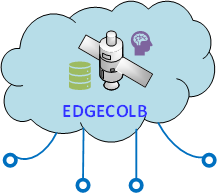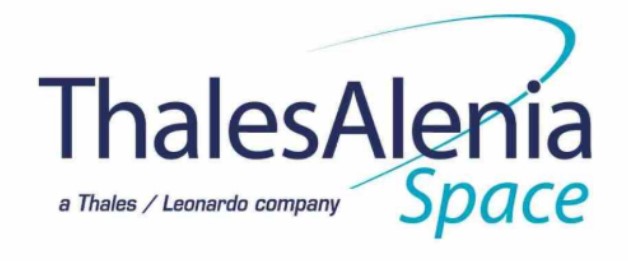
-
StatusCompleted
-
Status date2025-09-24
-
Activity Code3A.159
The main objective of the project is as follows:
- To develop load balancing techniques for onboard critical computational tasks as a trade-off between large in-situ computational resources versus distributed processing among less powerful (satellite) nodes and the consequent communication overhead.
In turn, this is broken down into sub-goals, which lead to the design and development of building blocks for the system implementation:
- To carry out a feasibility analysis of the implementation of edge computing and load-balancing schemes in space able to meet the payload constraints of current and future satellite systems;
- To implement AI-based solution in order to achieve deep optimisation;
- To prove that the developed solution will be able to outperform other solutions available from the literature or those currently in place mostly relying on transmission of raw or compressed data between the involved communication parties;
- To draw a technology roadmap towards the actual productization of the explored concepts and developed solutions.
To this end a two-steps approach will be pursued, consisting first in defining the technical solution and performing its validation through dedicated simulation framework; second in suitably translating the obtained solution into a distributed implementation for the actual project verification testbed.
Edge computing has been largely applied in terrestrial network in the last ten years and regarded as key-enabler for new services in 5G and the forthcoming 6G. Its application to satellite systems is considered equally appealing but the non-negligible propagation delay experienced by satellite systems along with the resource constraints exhibited by satellite platforms makes the use of edge computing concepts in space not trivial, hence requiring dedicated investigations.
The potential of exploiting edge computing in space relies in carry out pre-processing of data directly onboard satellite, without directly forward bulks of raw data to terrestrial computing facilities, which will ultimately saturate the available capacity offered by satellite feeder links. In this respect, edge computing may offer the possibility of better distribute the computational capabilities throughout a reference network, hence achieving a better utilisation of the network resources and attain a better power budget use.
The developed solution consists in combining edge computing solutions implemented onboard satellite with load-balancing principles, in order to make sure that dedicated edge computing servers do not get their computation capacity saturated and on the contrary a better distribution of tasks to the available server is reach by fulfilling well-defined Key Performance Indicators (KPI) in the context of edge computing (e.g. energy consumption, task response time, etc).
The project develops an implementation of edge computing concepts for integration in a dedicated testbed, according to three main scenarios: Earth observation, surveillance, and Internet of Things (IoT)-based services.
To this end, the technical solution is designed by considering different flavours of in-network computation, such as i) onsite processing, ii) nearest satellite processing, and iii) remote processing by terrestrial could computing facilities. The reference satellite system is a low Earth orbit (LEO) constellation implementing ISLs, whereby task assignment can reach the target satellite also over ISLs. Additionally, the case of LEO-to- geostationary orbit (GEO) connectivity is also duly taken into account to speed up data delivery to ground.
To achieve an efficient edge computing concept coupled to load balancing in space, two specific classes of algorithms have been designed and validated through a dedicated Python-based simulator:
- Heuristic-based: Maximum capacity allocation;
- AI-based: Single- and Multi-Agent Hierarchical Reinforcement Learning (HRL).
These have been in turn validated by considering a specific benchmark solution, "cloud-based", where essentially edge computing in space is actually not used and computation tasks are directly delegated to a remote cloud computing facility deployed in a terrestrial infrastructure, which is the current status-quo in cloud-based systems.
Finally, the designed and validated algorithms are demonstrated in a realistic testbed, aimed at showing the potentials of the edge computing in space as well as providing insights into the actual hardware/software requirements needed to implement these concepts in a real system implementation (i.e. in a real space segment).
The project plan has three phases:
- Phase 1: Requirements analysis and technical specification;
- Phase 2: Technical baseline definition and detailed design of the proposed solution;
- Phase 3: Overall demonstration of the technology and related collection of lessons learned.
The project has finalised its activities through Phases 1-3, by finalising the testbed implementing the designed edge-computing optimisation algorithms and providing a user graphical user interface (GUI) to efficiently configure and collect the performance results coming from the considered scenario.



